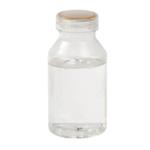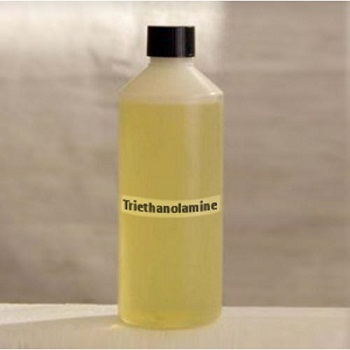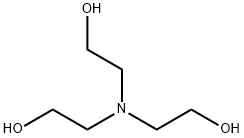What is Triethanolamine?
General Description
Triethanolamine,or TEA is a viscous, colourless/pale yellow liquid with a weak ammoniacal odour. Triethanolamine is incompatible with copper, copper alloys, galvanised iron, acids, and oxidisers. TEA is both a tertiary amine and a triol. A triol is a molecule with three alcohol groups. Approximately 150,000 tonnes were produced in 1999. It is a colourless compound although samples may appear yellow because of impurities. Reports indicate that in India itself, as many as six companies manufacture triethanolamine and it is manufactured by many different countries around the world. Global production and industrial application of triethanolamine is very extensive.
In industries, triethanolamine is used as a corrosion inhibitor in metal-cutting fluids; a curing agent for epoxy and rubber polymers; a copper–triethanolamine; in emulsifiers, thickeners, and wetting agents in the formulation of consumer products such as cosmetics, detergents, shampoos, and other personal products; and a neutraliser-dispersing agent in agricultural herbicide formulations. In brief, triethanolamine has wide applications as a corrosion inhibitor, a surface-active agent, and an intermediate in various products including metalworking fluids, oils, fuels, paints, inks, cement, cosmetic, and personal products and formulations of algicides and herbicides.
Chemical Properties
Triethanolamine is a tertiary amino compound that is ammonia in which each of the hydrogens is substituted by a 2-hydroxyethyl group. TEA is a colorless oily liquid with the smell of ammonia. It is hygroscopic with an irritant and ammoniacal odor. It is easy to absorb water and will turn into brown color when being exposed to the air and the light.
At low temperature, it will become colorless or pale yellow cubic crystal. It is miscible with water, methanol and acetone. It is soluble in benzene, ether, slightly soluble in carbon tetrachloride, n-heptane. It is a kind of strong alkaline, combining with protons, can be used for condensation reaction.
Production
Triethanolamine is produced from the reaction of ethylene oxide with aqueous ammonia, also produced are ethanolamine and diethanolamine. The ratio of the products can be controlled by changing the stoichiometry of the reactants.
Application
Overview
Triethanolamine is used in fatty-acid soaps; in dry cleaning, cosmetics, shampoos, creams, waxes, cutting oils, household detergents, and emulsions; in wool scouring; textile antifume agent; water repellant; dispersion agent; corrosion inhibitor; softener; emulsifier; humectant; plasticizer; chelating agent; rubber accelerator; pharmaceutical alkalizing agent; catalyst for condensation etc.; in emulsions with mineral and vegetable oils.The emulsifing agent triethanolamine can be contained in many products, such as metalwork cutting fluids and in color-film developers. Traces may exist in other ethanolamines such as mono- and diethanolamine.
Cosmetics Uses
Triethanolamine undergoes reactions characteristic of tertiary amines and of alcohols. Two industrially important reactions of the ethanolamines involve reaction with carbon dioxide or hydrogen sulfide to yield water soluble salts, and reaction with long chain fatty acids to form neutral ethanolamine soaps (Mullins 1978). Substituted ethanolamine compounds, such as soaps, are used extensively as emulsifiers, thickeners, wetting agents, and detergents in cosmetic formulations (including skin cleaners, creams, and lotions) (Beyer et al 1983).
The largest uses for triethanolamine are in the production of fatty acid soaps and detergents and in cosmetic formulations. In cosmetics, triethanolamine is an important raw material and is used in combination with fatty acids as emulsifiers for creams, lotions, skin cleaners, and shampoos. Triethanolamine is also used in cement and concrete to reduce particle agglomeration within the grinding mill; as an antistatic agent in the textile industry; in the metal industry for metal plating and in alkaline derusting formulations; in the rubber industry as a vulcanization accelerator; and in the manufacture of herbicides and pesticides. Triethanolamine may also be used as a surface active agent in cutting fluids; as an absorption agent for acidic gases in air pollution control; as a component of coating on fruits and vegetables; as a solvent for casein, shellac, and dyes; and as a penetrating agent for organic liquids in wood and paper (Bayer et al 1983; Mullins 1978; Windholz 1983). Triethanolamine is permitted in articles intended for use in the production, processing, or packaging of food (CFR 1981).
Triethanolamine isn't used in any specific product types per se, but you'll find this stabilizer and pH adjuster in everything from cosmetics and fragrances to haircare and skincare. In regards to skincare, in particular, triethanolamine can be found in a wide range of products: shaving gels and creams, sunscreens, lotions, serums, and cleansers.
Pharmaceutical Uses
Triethanolamine is widely used in topical pharmaceutical formulations, primarily in the formation of emulsions.
When mixed in equimolar proportions with a fatty acid, such as stearic acid or oleic acid, triethanolamine forms an anionic soap with a pH of about 8, which may be used as an emulsifying agent to produce fine-grained, stable oil-in-water emulsions. Concentrations that are typically used for emulsification are 2–4% v/v of triethanolamine and 2–5 times that of fatty acids. In the case of mineral oils, 5% v/v of triethanolamine will be needed, with an appropriate increase in the amount of fatty acid used. Preparations that contain triethanolamine soaps tend to darken on storage.
However, discoloration may be reduced by avoiding exposure to light and contact with metals and metal ions. Triethanolamine is also used in salt formation for injectable solutions and in topical analgesic preparations. It is also used in sun screen preparations.
Triethanolamine is used as an intermediate in the manufacturing of surfactants, textile specialties, waxes, polishes, herbicides, petroleum demulsifiers, toilet goods, cement additives, and cutting oils. Triethanolamine is also claimed to be used for the production of lubricants for the rubber gloves and textile industries. Other general uses are as buffers, solvents, and polymer plasticizers, and as a humectant.
Carcinogenicity
Results of carcinogenicity studies have been controversial. Hoshino and Tanooka reported that triethanolamine in the diet of mice at levels of 0.03% or 0.3% caused a significant increase in the occurrence of tumors, both benign and malignant. Females showed a 32% increase, mostly of thymic lymphomas. The increase of all other tumors, in both sexes, was 8.2%. They also found that triethanolamine reacted with sodium nitrite to produce N-nitrosodiethanolamine and that the product caused mutagenesis in bacteria. Maekawa et al. reported that no carcinogenic activity was found when given orally to rats in drinking water at concentrations of 1% and 2% for 2 years. However, the dosage to females was halved after week 69 of treatment owing to nephrotoxicity. Histological examination of renal damage in treated animals revealed acceleration of chronic nephropathy, mineralization of the renal papilla, nodular hyperplasia of the pelvic mucosa, and pyelonephritis with
or without papillary necrosis. Nephrotoxicity seemed to affect life span adversely, especially in females. Tumor incidence and histology were the same in the treated group as in controls.
Safety Profile
Moderately toxic by intraperitoneal route. Mildly toxic by ingestion. Liver and kidney damage have been demonstrated in animals from chronic exposure. A human and experimental skin irritant. An eye irritant. Questionable carcinogen with experimental carcinogenic data. Combustible liquid when exposed to heat or flame; can react vigorously with oxidizing materials. To fight fire, use alcohol foam, CO2, dry chemical. When heated to decomposition it emits toxic fumes of NOx and CN-.
Triethanolamine is used primarily as an emulsifying agent in a variety of topical pharmaceutical preparations. Although generally regarded as a nontoxic material, triethanolamine may cause hypersensitivity or be irritant to the skin when present in formulated products. The lethal human oral dose of triethanolamine is estimated to be 5–15 g/kg body-weight.
Following concern about the possible production of nitrosamines in the stomach, the Swiss authorities have restricted the use of triethanolamine to preparations intended for external use.
LD50 (guinea pig, oral): 5.3 g/kg
LD50 (mouse, IP): 1.45 g/kg
LD50 (mouse, oral): 7.4 g/kg
LD50 (rat, oral): 8 g/kg
You may like
Related articles And Qustion
Lastest Price from Triethanolamine manufacturers

US $2400.00/T2024-04-26
- CAS:
- 102-71-6
- Min. Order:
- 1T
- Purity:
- 99%
- Supply Ability:
- 20tons

US $2342.00-2335.00/Tons2024-04-26
- CAS:
- 102-71-6
- Min. Order:
- 200Tons
- Purity:
- 99.99%
- Supply Ability:
- 300Tons




